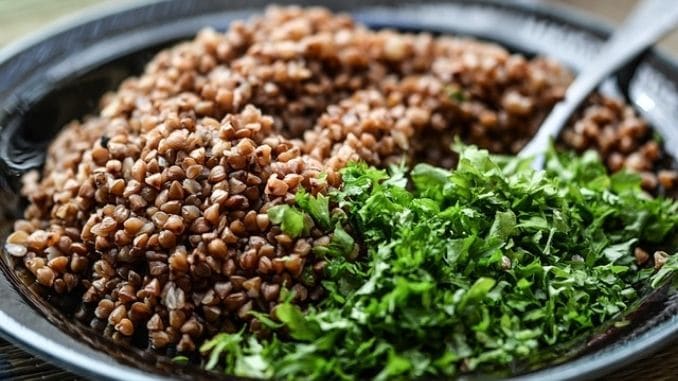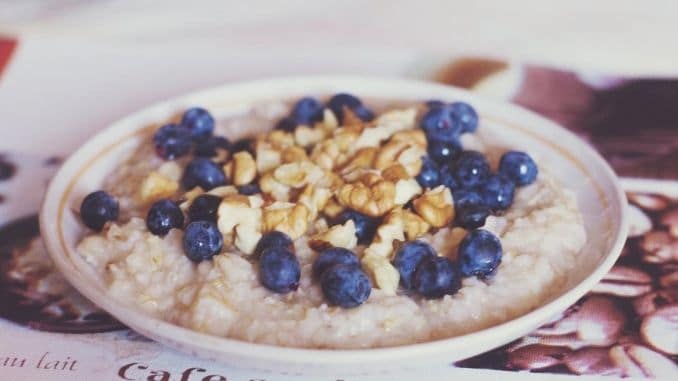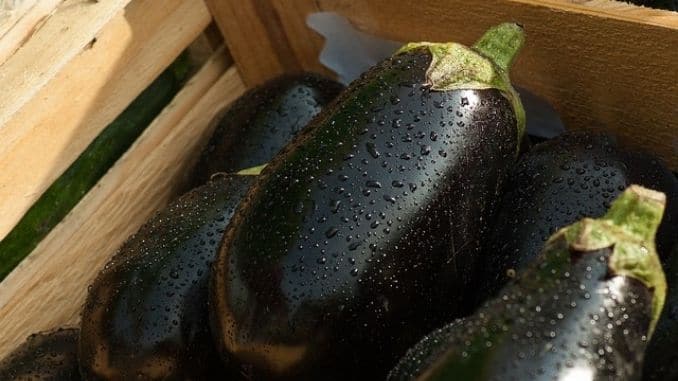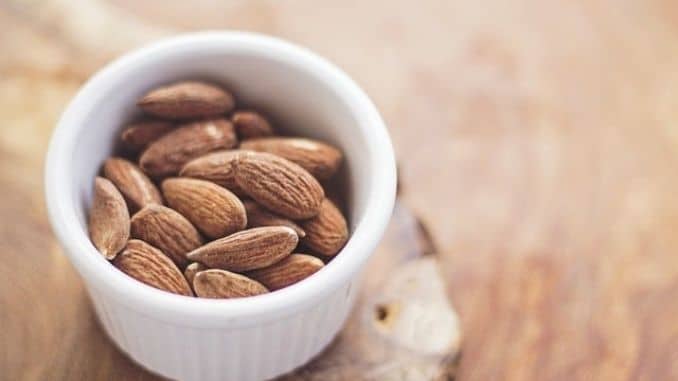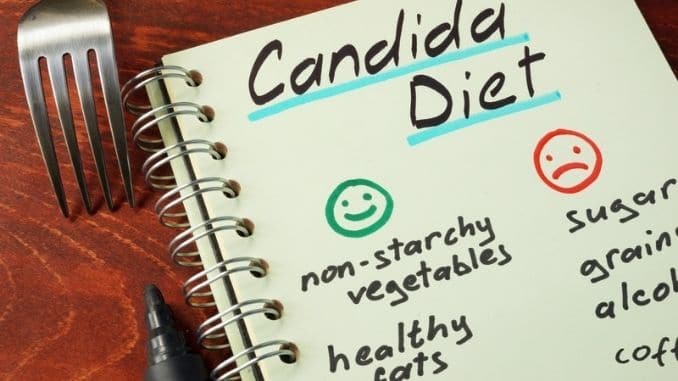
I If you’ve suffered from recurring yeast infections, athlete’s foot thrush, you may have considered going on the candida diet to help prevent any recurrences.
The purpose of the diet is to starve any candida yeast organisms living in your body so that they can no longer cause any infections. You eat only low-sugar, anti-inflammatory foods that promote good gut health and eliminate the sugars that tend to feed candida overgrowth.
The question is, will this diet help protect you from candida problems in the future?
What Is Candida?
Candida is a species of fungus ― or yeast, which are members of the fungus kingdom ― that can create infections in humans. The most common problem-causer for us is Candida albicans, although there are other types as well. They live as part of the natural community of microorganisms present in the body and, most of the time, they don’t cause any issues.
Candida albicans typically inhabit the mouth, throat, gut, vagina, and skin. However, if it becomes too plentiful, grows out of control or gets into the bloodstream or internal organs, it can cause potentially dangerous infections.
Candidiasis, the most common type of fungal infection in people, results from an infectious overgrowth of Candida albicans.. Some examples of candida infections include:
- Urinary yeast infection: The candida species, especially in the elderly and hospitalized individuals, can be a cause of urinary tract infections (UTIs). Moreover, without treatment, the infection can move up into the kidneys. A course of antibiotics, diabetes, a weakened immune system, or the insertion of a urinary catheter can all increase the risk of experiencing this type of infection.
- Genital yeast infection: Many women know what it’s like to suffer a yeast infection. Candida albicans is the primary cause of these in most cases. The vagina normally contains them, but if a disruption occurs in the natural balance of bacteria, Candida can overgrow and cause an infection Oral-genital contact, antibiotics, diabetes, pregnancy, and oral contraceptives can all increase the risk of this type of infection.
- Oral thrush: Candida albicans is normally present in the mouth but, again, if it overgrows, it can cause an infection that if left untreated, can spread to the throat. Moreover, antibiotics, uncontrolled diabetes, a weakened immune system, and dentures can all increase the risk of this infection.
- Mucocutaneous candidiasis: This encompasses any Candida albicans infection of the skin and mucous membranes. Possible locations for this infection include the armpits, groin (jock itch), corners of the mouth, skin between the fingers and toes (athlete’s foot) and under the breasts. Wearing tight or synthetic undergarments, poor hygiene (leaving wet or soiled diapers on infants can cause diaper rash, which is often a yeast infection), antibiotics, diabetes and a weakened immune system all increase risk.
- Onychomycosis: This is a fungal infection of the nail bed and typically affects toenails more than fingernails. It can cause discoloration, thickening and even crumbling of the nails. Yeasts like Candida albicans can cause this problem as can other types of organisms.
- Candidemia: This occurs when Candida albicans enter the bloodstream and cause an infection. It can be life-threatening in certain conditions. Risk factors are similar to the other conditions listed here and also include going through treatment for cancer, undergoing major surgery or having a feeding tube or catheter.
- Endocarditis: This is an infection of the inner lining of the heart and is a serious, life-threatening condition. Candida albicans is sometimes the cause. Risk factors are similar to the others listed here.
- Endophthalmitis: If Candida albicans overgrows in the eye, it can cause a type of inflammation called endophthalmitis. Both Candida albicans and Candida tropicalis can cause the infection.
- Meningitis: An inflammation of the tissues around the brain and spinal cord, meningitis may be caused by Candida albicans that travels through the blood. This type of meningitis may be acquired during a hospital stay or after a recent surgical procedure.
- Intra-abdominal candidiasis: This is an inflammation of the lining of the inner abdomen that may be caused by Candida albicans or other candida types. The risk factors include recent abdominal surgery, antibiotic therapy, and diabetes.
Treatment for any of these conditions typically involves antifungal creams, ointments, and medications. Sometimes, however, the infections return repeatedly, causing frustration. At that point, people may look for other solutions to keep them infection-free, such as the candida diet.
Other Symptoms That May Suggest Candida Overgrowth
In addition to the conditions listed above, there are other ways that candida overgrowth can affect health and well-being. These include the following:
- Fatigue: Fatigue and tiredness are often associated with candida overgrowth. This may be because the immune system is weakened, which can cause fatigue and allow candida to flourish. It could be because the infection is accompanied by nutritional deficiencies, which can lead to fatigue. Sometimes, if candida overgrows in the gut, it can disrupt your natural microbiome, which may cause chronic fatigue.
- Recurring UTIs or yeast infections: If these types of infections keep recurring, it could be because of an overabundance of candida either in the vagina or urinary tract.
- Digestive problems: Bloating, gas, cramps, nausea, diarrhea, and constipation can be caused by several different things. Sometimes, however, candida overgrowth is to blame. In one 2011 study, researchers found that a high level of candida in the digestive tract was associated with inflammatory bowel diseases and ulcers. In a 2015 study, researchers found that candidiasis caused gastrointestinal symptoms, including bloating, indigestion, diarrhea, and gas.
- Sinus infections: Sinus infections that keep coming back are sometimes caused by fungal infections like candidiasis. In one Mayo Clinic study, researchers found that most chronic sinus infections were the result of an immune system response to fungus.
- Joint pain: Joint pain is most commonly caused by arthritis. However, in some cases, it may be associated with Candida, especially after undergoing surgery. This type of joint pain typically occurs only after candida has entered the bloodstream.
The Candida Diet: Effective or Not?
Individuals looking to break the cycle of recurrent candida infections who want to prevent these infections from occurring in the first place may look to the candida diet for help. It’s important to note that the diet is largely unproven. Currently, major health organizations don’t put any credence into the idea that it can cure candida overgrowth. They do, however, admit that the diet can result in improved health because it encourages healthy eating habits.
Generally speaking, the candida diet removes all sources of flour, sugar, and yeast and encourages the intake of lean proteins, nonstarchy vegetables, and healthy fats, along with some recommended supplements. Moreover, by limiting certain foods, the idea is that you prevent yeast overgrowth and starve candida species that already exist.
Moreover, there has been some research suggesting that carbohydrates or sugars may promote yeast growth. In 2012, for example, researchers reported that the availability of sugars, amino acids, and nitrogen compounds all affected the growth rates of yeast cells.
Scientists also reported in a 2013 study that candida was positively associated with diets high in carbohydrates. But negatively with diets high in amino acids, protein, and fatty acids, which suggested that diet may affect candida in the gut, at least.
So far, we have little research on whether the candida diet works to curb the growth of candida in various parts of the body, but many people have found that they feel better after going through a candida diet. Because the diet does limit foods that spike blood sugar in the body, it may also help regulate blood sugar, which can result in more optimal health.
How to Get Started on the Candida Diet
As with any diet, it’s important to check with your doctor before starting to be sure you don’t have any health conditions that may make it dangerous for you. Then, most proponents of the diet suggest you go on a candida cleanse first to help prepare for the candida diet. Moreover, this typically involves spending a few days “washing out” your system by drinking a lot of fluids and eating mainly vegetables, salads and small amounts of protein.
When you’re ready, you can start on the regular candida diet. Although there’s no specific timetable for the diet. It’s usually recommended to follow it for a limited time. Typically between several weeks and several months, until symptoms improve. Moreover, the diet can be difficult to maintain for long periods as it is restrictive.
Pregnant and breastfeeding moms should avoid this diet as it may result in nutrient deficiencies. It is a low-carbohydrate diet, so those who have diabetes need to watch their blood sugar levels carefully and realize they may need to change doses of medication ― sometimes lowering them ― to accommodate the changes in the diet.
Below are general recommendations of what to eat and what to avoid.
What to Avoid on the Candida Diet
- High-sugar fruits: Bananas, dates, fruit juice, grapes, mango and raisins
- Dried fruit and fruit juices: These are high in sugar, so avoid them all
- Grains containing gluten: Barley, rye, spelled, triticale and wheat
- Certain meats: Deli meats and farm-raised fish
- Certain dairy products: Cheese, cream and milk
- Nuts and seeds high in a mold: Cashews, peanuts, pecans, and pistachios
- Beans and other legumes: These are starchy and can feed candida
- Starchy vegetables: Acorn squash, butternut squash, and spaghetti squash
- Condiments: Barbecue sauce, horseradish, ketchup, mayonnaise, soy sauce, and white vinegar
- Processed fats: Canola oil, imitation butter spreads, margarine, soybean oil, and sunflower oil
- Sugar and sugar substitutes: Agave, aspartame, cane sugar, corn syrup, honey, maple syrup, molasses, and table sugar
- Caffeinated and alcoholic drinks: Beer, black tea, cider, coffee, energy drinks, liquors, soda, spirits, and wine
What to Eat on the Candida Diet
- Nonstarchy vegetables: Artichokes, asparagus, broccoli, Brussels sprouts, cabbage, cauliflower, celery, cucumber, eggplant, kale, onions, raw garlic, rutabaga, spinach, and zucchini
- Low-sugar fruits: Lemons, limes, and berries
- Gluten-free grains: Amaranth, buckwheat, millet, sorghum, oat bran, quinoa, and teff
- High-quality proteins: Anchovies, chicken, eggs, herring, sardines, turkey and wild salmon
- Some dairy products: Butter, ghee, kefir, and plain yogurt
- Nuts and seeds low in a mold: Almonds, coconuts, flaxseeds, hazelnuts, and sunflower seeds
- Healthy fats: Avocados, coconut oil, flax oil, olives, olive oil, and sesame oil
- Condiments: Apple cider vinegar, coconut aminos, and sauerkraut
- Herbs and spices: Basil, black pepper, cinnamon, cloves, dill, garlic, ginger, oregano, paprika, rosemary, salt, thyme, and turmeric
- No-sugar sweeteners: Erythritol, stevia, and xylitol
- Noncaffeinated drinks: Water, herbal teas, chicory coffee, and kombucha tea
- Probiotics: It may be wise to take a probiotic supplement to help balance the microbiome in the gut
For the best foods to heal your body, make sure to check out The Best Foods that Rapidly Slim & Heal in 7 Days, here!

